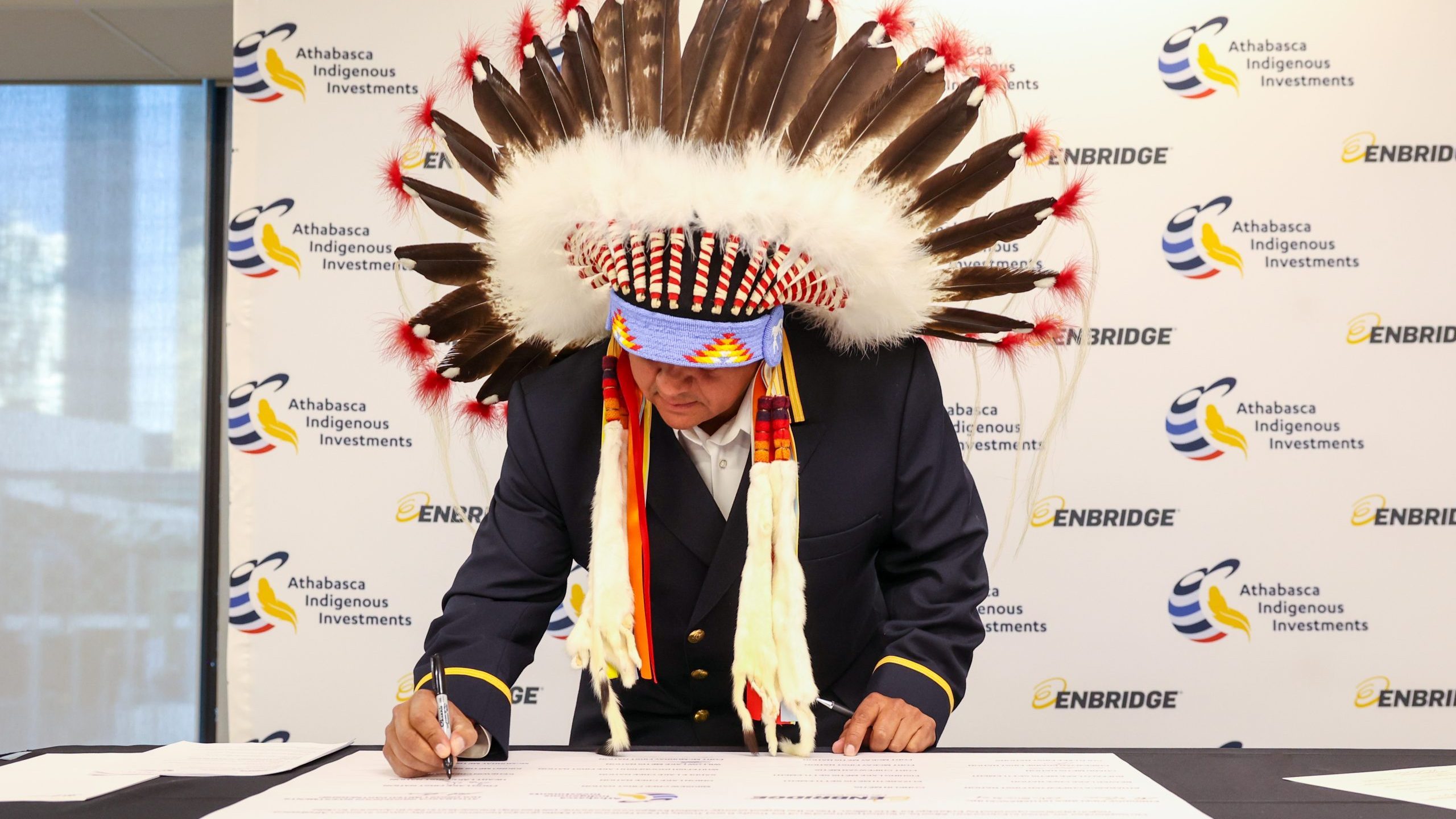A year after inking a historic partnership between Indigenous communities and pipeline giant Enbridge, the relationship is bearing fruit.
The historic families of the Willow Lake Métis Nation can trace their roots in the Anzac region southeast of Fort McMurray to the early 1800s, well before Canada’s confederation in 1867.
And having only been able to purchase land to establish a permanent home for the community in 2022, the Nation wants to share the story of its people to the wider world.
That is a big reason behind the recent negotiation to purchase a 65-acre recreational vehicle park and campground, which the community plans to turn into a tourist destination.
“Tourism provides an opportunity for Willow Lake to tell its story and the story of the Métis. That is as important to our elders as the economic considerations,” says Michael Robert, Willow Lake’s chief financial officer.
The campground purchase is being fueled by the community’s participation in a landmark agreement with Enbridge to sell an 11.57 per cent stake in seven of its pipelines in northern Alberta to 23 Indigenous communities, including Willow Lake.
There was no official ceremony marking the agreement’s one-year anniversary on Sept. 28 in the community. None was necessary because most of its citizens are too busy working in the energy sector, Robert says.
“Most of our community works in oil and gas and welcome development as long as it treats the land and water responsibility. This broad acceptance of responsible resource development was probably what surprised me the most when I moved here in 2022,” says Robert, who worked for more than 20 years in energy development in Calgary before relocating to Anzac.
“Our citizens still hunt, fish, pick berries and we have many active trappers in our community. We also want to see the land protected for future traditional use, which is why we monitor the soil and water around us.”
The ownership agreement with Enbridge is Willow Lake’s second equity partnership in the energy sector in the past two years.
The community also joined in the Astisiy partnership with seven other Indigenous communities and Suncor Energy in 2021 to acquire an equity interest in the Northern Courier pipeline for $1.3 billion. Willow Lake used its portion of the revenues generated from the tolls to purchase a 205-acre parcel near Anzac to give the community the first land to call its own.
In a separate deal last year, Willow Lake and 22 other First Nation and Métis communities formed Athabasca Indigenous Investments to collectively purchase the minority stake in seven pipelines from Enbridge for $1.2 billion.
Justin Bourque, Athabasca Indigenous Investments’ president, says communities have taken different approaches to how they’ve invested their returns.
“The different partners have done what works for their particular community and circumstance,” says Bourque.
“[Some] have used the funds disbursed to them to pay for more teachers or educational opportunities and building out their social infrastructure in their communities. One community is building a strategy around improving the quality of life for the elderly. Others have used the money to acquire lands or build infrastructure for their communities.”
Bourque sees the model of bringing in Indigenous communities as investment partners as the new standard that should be adopted across the country.
“While it is primarily concentrated in northeastern Alberta because oil and gas has been the pacesetter for these partnerships, the model is not regionally constrained. It can be replicated and used throughout Canada by different industries,” Bourque says.
Both of Willow Lake’s recent equity deals in the energy sector were enabled by loan guarantees from the Alberta Indigenous Opportunities Corporation: $40 million for the Astisiy Partnership and $250 million for the agreement with Enbridge.
“Without that loan guarantee, the project would not have happened,” Enbridge executive vice-president Cynthia Hansen told a recent event held by Canadian Club Toronto.
“We need to work together to create mutually beneficial opportunities, empowering Indigenous nations to become equity investors in projects with the private sector is material to the Canadian economy. But most do not have access to the capital without the support of loan guarantees from governments and other financing to move infrastructure and really any project forward. They’re having to get really creative.”
Bourque echoes the call of the Indigenous Resource Network (IRN) for the federal government to extend loan guarantees and tax credits for Indigenous ownership of resource projects.
The IRN is concerned that Ottawa could create a national Indigenous loan guarantee program but block involvement in oil and gas.
“Excluding oil and gas is very damaging to Indigenous communities who could benefit from responsible development of that resource. You are [also] losing the opportunity for Indigenous communities to influence industry to be more environmentally conscious,” Bourque says.
“Enbridge is a case study of what can happen, when all parties, including government are open to creating partnerships. Exclusion of industries doesn’t help.”
The unaltered reproduction of this content is free of charge with attribution to Canadian Energy Centre Ltd.
